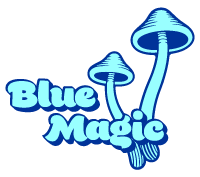Microdosing 101: The Basics
Simply put, microdosing is the practice of taking a very small amount of a drug. While the term can be applied to the use of nearly any substance, mainstream use of the word typically refers to psychedelics and hallucinogens
After extensive market research, here are the most commonly microdosed substances:
LSD: LSD, or lysergic acid diethylamide, is a powerful hallucinogenic drug made from a chemical in rye fungus.
Psilocybin Mushrooms: Also known as magic mushrooms or shrooms, “psilocybin mushrooms” is actually a term that refers to any of the more than 180 species of fungi that contain psilocybin (or its derivative, psilocin), a naturally occurring psychedelic compound.
Folks who microdose take such a small amount of these drugs that their hallucinogenic effects are virtually imperceptible. Treatment involves taking the small dose every three days for a period of one or two months. When using LSD, a microdose is usually between six and 20 micrograms (or about 1/16th and 1/5th of a single tab), and for psilocybin mushrooms it’s about 0.1g of dried, powdered mushrooms.
How Is Microdosing Different From a Full-On Trip?
To understand how it works, you first have to understand how psychedelics affect the human mind. LSD and psilocybin mushroom trips are often life-altering experiences. Those who have experimented with these drugs (both recreationally and in controlled settings) frequently describe experiencing states of euphoria along with audio-visual synesthesia, which means seeing sounds, for example, or smelling colors, and a shifting sense of reality.
Science has an answer for why psychedelics have this effect on people: They work on a part of the brain known as the parahippocampal retrosplenial cortical network, which is thought to play a role in controlling our sense of self, or ego.
Those who microdose, on the other hand, don’t report experiencing a radically altered state of reality or mystical awakening. However, some do report small changes in perception, but these changes are very subtle, like colors appearing a little brighter. In other words, the effects of microdosing are more or less what you might expect: much less intense versions of the effects of a trip.
Can Microdosing Help Anxiety and Depression?
Psychedelics went largely unstudied for years, but in August 2018, researchers published a study that suggested microdoses of “magic truffles” (the underground portion of psilocybin mushrooms) increased both divergent and convergent thinking — two forms of thinking associated with creativity and problem-solving. While psychedelics’ true impact on creativity and productivity remains to be seen, there’s actually far more evidence that they could be useful in treating mental health issues — particularly anxiety, depression, and PTSD.
Despite the vast information currently available documenting the benefits of using psychedelics as treatment for mental health illnesses, the current status of the substance remains as an unacceptable medical treatment. This is partially due to the high potential that users will build a tolerance to it, and the substance’s high potential of recreational abuse.
Is it safe to microdose?
There are no immediate dangers to using psilocybin mushrooms, however there are multiple risks of safe sourcing, and risk of long-term abuse.
For newcomers while macrodosing is a personal enlightenment experience, our recommendation is always to gain advice from someone whose done it before. There is a great community available, please reach out to anyone in the macrodosing community to get the most information about safe processes before your first session. The best way to get the most out of your first experience, will be with someone whose done it before!





